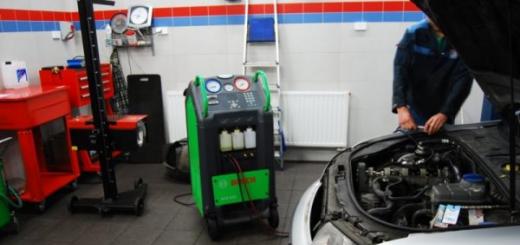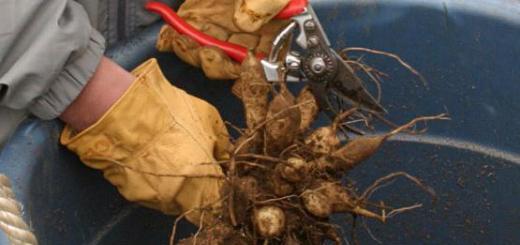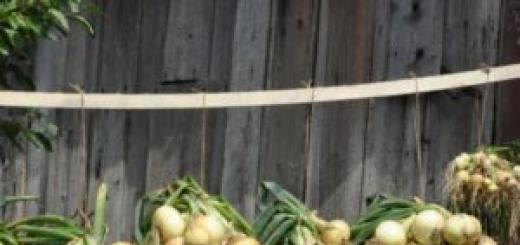These flowers attract gardeners and specialists in the design of gardens and dachas with their exquisite beauty, variety of shapes and colors. And even despite their rather limited flowering period, bearded irises have long been favorites in landscape design.
However, not all plants of this species can boast of this status. Dwarf bearded irises, unfortunately, are undeservedly deprived of attention today. And it’s completely in vain: these flowers may well give a head start to their taller counterparts, since they can be used not only in flower beds and flower beds, they look great in rock gardens and as a potted plant.
Dwarf irises: description
These amazing plants do not exceed forty centimeters in height, although often these crops reach only twenty centimeters. Despite these rather modest sizes, their flowers are as large and bright as those of traditional species. And they are not deprived of a variety of shapes and colors. And even the “beard” so beloved by gardeners and their abundant flowering are not inferior to the tall representatives of the family.
As a rule, two or three flowers bloom on one peduncle, but a large number of flowering shoots compensates for the density of the bushes. The only difference between these plants is the height of the peduncles and leaves. This is, so to speak, a miniature copy of traditional species, but this does not at all affect the size of the flowers. But the endurance and unpretentiousness of dwarf irises is much more pronounced. Small bushes open up new and often unexpected possibilities in the design of gardens and cottages.

Experts divide all varieties of dwarf irises into two categories:
- standard dwarfs - Standard Dwarf Bearded;
- miniature dwarfs - Miniature Dwarf Bearded.
Advantages of dwarf varieties
If you are interested in low-growing varieties of irises (you can see the photo in this article), you should know about their advantages:
- Already in the second year, budding of dwarf irises begins, which allows you to quickly create a beautiful flower bed;
- small bushes bloom two weeks earlier than their tall “relatives” and have many buds;
- Dwarf irises are distinguished not only by colorful inflorescences, but also by spectacular foliage, which does not lose its decorative effect throughout the season.
Popular varieties of dwarf irises
This variety of irises was cultivated recently, about a hundred years ago, but despite this, breeders now offer a huge number of varieties of these spectacular plants.
Wink
Iris dwarf white. Its inner petals are snow-white, and the lower lobes are bluish. The stem is 23 centimeters high; two buds measuring 5x9 cm appear on one peduncle.

Cry Baby
Irises are dwarf with large pale blue flowers. During flowering, the petals fade a little in the sun, becoming almost white. The stem reaches a height of twenty-eight centimeters and one or three beautiful buds appear on it.

Puppet
A magnificent lavender dwarf iris. Its petals have brown veins. The peduncle of this plant grows up to thirty centimeters and produces up to three buds measuring 5x11 cm.

Sapphire Gem
This dwarf iris, the photo of which we have posted below, has an exquisite deep blue color with a white groove on the petals. The buds are medium in size (6x10 cm), the stem is about thirty-five centimeters high. Up to four flowers bloom on one peduncle.

"Little Shadow"
The height of the bush can vary from 20 to 40 centimeters. Purple-blue velvety flowers open in May-June. The petals have a dark blue beard. This variety blooms again in August. Prefers well-drained garden soil. Dwarf iris "Little Shadow" does not tolerate stagnant moisture.
Good lighting is necessary for active flowering. In snowless, frosty winters, additional shelter is required. Used when decorating borders and mixborders.

Little Dream
A very delicate dwarf iris with rather large flowers (6.5x11.5 cm). The petals are soft lilac, the beard is blue. The stem grows up to 35 cm and produces up to three flowers.

"Cats Eye"
Iris with a very interesting color: dark pink petals with a large dark cherry spot. Plant height 30 cm. Leaves are broad-linear, bluish in color. When planting, the roots of this plant are slightly deeper and mulched on the surface.

The dwarf iris “cats eye” blooms in April-May, a little earlier than many species. It needs light soils rich in nutrients with a neutral reaction, sun and quiet places protected from the wind. Used to decorate terraces in spring, mainly planted in ceramic bowls.
Carats
The yellow dwarf iris of this variety attracts gardeners with the yellow-orange hue of its petals. The white beard acquires a reddish tint closer to the tips. This variety, created in 1994, is like a gold bar, filled with sunshine from the inside.

Growing irises
If you grew tall varieties of these plants on your site, then planting dwarf irises will not cause you any problems. First you need to select a site for planting. Dwarf varieties love space and sun; only if these conditions are met will they delight you with bright buds.
Place your flower bed in the brightest, most open area that receives plenty of sun throughout the day.
The soil
This culture loves breathable, nutritious and light soil. If the soil in your garden is not loose enough, we recommend mixing it with sand. Acidic soil requires alkaline substances: lime, ash, etc. Good drainage is essential, which will prevent excess moisture from stagnating in the soil and causing root rot.
Planting irises in the ground
Dwarf irises are planted in the warm season: from early April to mid-August. The advantage of these plants is that they tolerate any transplants well and take root quite quickly and easily in a new place. Having selected a site for planting, dig up the soil to a depth of about twenty-five centimeters and add potassium, phosphorus, and nitrogen fertilizers to it. There should be twenty grams of phosphorus and potassium and ten grams of nitrogen per square meter.

Before planting, iris cuttings should be treated with a solution of potassium permanganate for two hours. This procedure will help reduce the risk of various diseases. The seedlings are lowered into the hole so that the root collar is above the soil level. For the first five days, young plants are watered abundantly if the weather is very hot. Two to three hours after watering, the soil must be carefully loosened, being careful not to damage the roots.
The soil around the bushes can be mulched, but this must be done very carefully, given the fact that these plants do not like organic mulch, grass, tree bark and other plant materials. Coarse sand or small pebbles are more suitable for this purpose.
Caring for miniature irises
These are unpretentious plants that do not require complex care. In the spring, they are fed with potassium-phosphorus compounds before budding. They will help the plants form large and beautiful buds. To stimulate flowering, you should use the following scheme:
- nitrogen-potassium fertilizers are applied in early spring;
- after twenty days, phosphorus and nitrogen are added to the soil;
- When the plants bloom, they will need mineral compounds.
During the season, it is necessary to cut off the faded buds, and when flowering is completed, the flower stalks are completely removed. At the very end of the season, irises are trimmed, cutting leaves to 10 cm. Approximately every four years, irises should be divided and replanted. To do this, first cut off the leaves at a level of seven centimeters from the soil surface, then dig up the roots and divide them into parts. It is important that at least one or two leaf rosettes remain on each fragment.

Propagation of irises: vegetative method
This is the easiest and most popular way to propagate irises. We talked about this procedure above. It can be done at any time, but it is better to do this after flowering has completed, when the plants enter a dormant period.
Kidney method
This is the second method of vegetative propagation. Each annual link of the root system has a spare bud, from which a new plant can grow in the future. Each fragment of the rhizome is carefully separated, disinfected with potassium permanganate and planted for growing. This method is advisable when it is necessary to obtain many new bushes from a small number of mother plants.
When propagated by the vegetative method, irises begin to bloom the very next year after planting, but provided that they were planted in July or early August.

Propagation by seeds
This method is used in cases where a gardener wants to cross varieties and grow new hybrids. Seeds are usually sown in the fall, immediately after collecting planting material. Irises are sometimes sown in spring, but in this case it is necessary to stratify the grains. To do this, the grains are soaked in water for several hours, then mixed with coarse sand and put in the cold for two weeks.
Seeds sown in autumn are deepened two centimeters into the soil. In spring, the first shoots appear on the surface, but the plants usually germinate completely in the second year. Using this method of propagation, you will wait for flowering no earlier than three years after planting.
Irises in landscape design
In flower arrangements and flower beds, dwarf irises look great combined with plants that bloom in spring or summer. If we consider the first group, then tulips, daffodils, imperial hazel grouse or Pushkinia will be excellent neighbors for irises.
In rock gardens, these attractive low-growing flowers look harmonious next to rock alyssum, phlox, milkweed, and Caucasian rhizome. Small irises are also good in the rose garden, because in combination with the “queen of flowers” this culture also looks very impressive.
If you decide to plant irises in rock gardens or rock gardens, keep in mind that these plants require quite a large space. Try not to plant ground cover and creeping crops next to them, which will simply “strangle” the beauty of the irises. These flowers are suitable for creating ridges and decorating borders. Luxurious buds look especially beautiful on stone fill, sand, small pebbles or other decorative mulch.

Often, dwarf irises are grown in flowerpots and pots, in stone bowls and plant pots, as well as in other containers that are installed on a personal plot, veranda, or balcony. When planting irises in pots, ensure good drainage. Prefer containers with good drainage holes at the bottom. For the drainage layer, use expanded clay, broken brick, and small pebbles in a layer of at least five centimeters. It is important to cover the drainage layer with some non-woven material and only then can you fill in the soil.
We told you about wonderful plants that will undoubtedly decorate any garden plot. They are unpretentious and at the same time very responsive to the attention and care of their owners.
Irises are a perennial herbaceous plant with a thick, fleshy, creeping rhizome. Usually the stem of the plant is branched at the top. The basal leaves are sword-shaped, blue-green in color, the stem leaves are linear.
The flowers are large, single, located on the tops of the branches in the axils of the leaves. The fruit is a three-lobed multi-seeded capsule. The iris gets its name from the different shades of its flowers. They can be: white, yellow, sky blue, purple, or resemble a rainbow. The word iris is translated as rainbow.
Iris is a champion in the variety of flower colors. Its petals contain all the colors of the rainbow: from warm sunny, red-orange-yellow to cold blue-violet and deep dark purple, almost black.
Irises are a special group of plants and each flower in it is a gift skillfully created by nature. Find a bright spot or a slightly shaded spot in yours and plant a collection of irises. Plant it, you won’t regret it!
Irises photos - the best varieties
- For your viewing, we offer varieties of bearded irises, beautiful, graceful, large:
Variety - Paradise bird

The petals are silky, shiny lilac-crimson with a wavy frill along the edge and a red-coral beard.
Variety - Sunset in Avalon (Avalon sunset)

These irises are like a gift from the passing day in the soft reflection of the sun and delicate subtle aromas. Rich, warm and joyful orange in the ruffled petals of large flowers glows with coral, apricot and salmon shades of happiness.
Variety - Silkirim

Delightful, sophisticated and elegant. The upper petals are lush, strongly wavy, brownish-pink with beige shades of “baked milk” of the graceful lower petals, edged with a slightly ruffled lingonberry-brown frill.
Variety - Mission Ridge

The flowers are large, corrugated, airy silk. A soaring blue-white sail of the upper petals against the background of a wide blue-blue wave of the lower ones.
Variety - Victoria Falls

The coolness of the sky blue and the undulating picturesque water flow are reflected in the gorgeous blue flowers with large petals bordered by a light wavy frill. Irises captivate with their purity and richness of color and exquisite flower shape.
Variety - Amsterdam

The luxury, richness and royalty of the lower petals with thick, almost inky veining on a purple background in complete harmony with the spirituality and nobility of the delicate, graceful and wavy upper petals. This union is strengthened and emphasized by a contrastingly bright coral-red beard with radiant, radiating short pearly-white stripes.
Sort – Player (Depht of field)

A flower of enormous life-affirming power, bright, orange. The petals are wavy, textured, with pronounced venation and a corrugated frill along the edge.
Variety - Ruffles and lace

Flirty irises, glowing with the joy of the morning dawn with delicate transparent pink flowers. The petals are light, wavy with pronounced venation and an openwork, like lace, frill along the edge.
Variety – Muffin (Golden Muffin)

The flower is always beautiful and sunny with golden and wavy upper petals and velvety lower ones. Along the central vein of the lower petals there is a light reddish-bronze with dark burgundy stripes.
Variety - Wine and roses

Harmony of beauty and grace. Above the wavy wine-red lower petals bordered by a soft lilac frill, a magical dance of light wavy orchid-pink upper petals with a subtle pattern of veins the color of cherry buds, illuminated by the warm rays of a golden-coral beard.
Variety - Pretty pink

The flower is airy and light, like a statue, all covered in lace and ruffles. The petals seem to be made of printed silk, textured with pronounced light crimson veining and a corrugated edge.
Variety - Cherry garden

A very expressive dwarf variety. The petals are a rich dark cherry color with a thick purple tint and a beard glowing with sapphire rays.
Variety - Fall fiesta

A very attractive variety with creamy white wavy upper petals that blend harmoniously with the honey tones of a pastel terracotta color. Irises exude a pleasant subtle aroma of lily of the valley.
Variety - Windsor Rose

Crystal pink petals with an elegant wavy frill along the edge delight with their beauty, give tenderness, and envelop with the subtle aromas of spring and blooming summer.
Variety - Brown Lasso

Beautiful and expressive flowers with sun-gold upper petals against a background of fluted lavender lower petals with a wide light brown border. The beard is silky, fluffy, egg-yellow, like a chicken.
Variety - Attention! (Attention please)

Stop sign, impossible to pass by! A delightfully beautiful flower of bright dark cherry shades, contrasting with the golden-yellow background of the lower petals and the orange-yellow beard.
Variety - Flamengo (Flamemco)

The contrast of color is reminiscent of a storm of passions and emotions of the upper petals with the illumination of the white-hot golden shine of the lower petals with a wide corrugated border of thick red-terracotta specks.
Variety - Sapphire dawn

A flower with the charm of the blue southern sky before dawn. The petals are strongly wavy with a ruffled frill, at the base of the lower petals there is a “moon path” with a fluffy pale blue beard in the center.
Variety - Black dragon

An exclusive one-color variety with velvety blueberry-black flowers with a purple tint and a black-purple beard.
2. Here are varieties of xiphoid irises. This variety of irises begins to bloom later than the bearded iris, prolonging and repeating this beautiful moment. The flowers are very large, open, live long:
Variety - Pink Ice

Very delicate, enchanting flowers with wavy and light chiffon petals in touching shades of flamingo pink and warm, like a fragile hope for a thaw, sunbeams in the center.
Variety – Exciting (Moonlight waves)

Irises with the color of radiant whiteness of lunar silence. Magnificent, very large flowers with open pearly-white wavy lower petals and small upper petals with light golden highlights at the base.
Variety - Graceful

An elegant, graceful and impeccable variety - an aristocrat with airy, light, cloud-white flowers, painted along the edges of the petals with bluish-lilac shading.
Variety - Scallops (Cascade crest)

A flower with luminous purple sparkles and stripes with a contrasting lemon-yellow radiant spot in the center of the petals.
3. Louisiana irises:
Variety - Rhett

Very strong magical temperament of purple-red shades of the color of ripe cherry with a piercing, like a cupid's arrow, dark purple ray in the middle of the lower petals.
4. Siberian irises. Marked as unpretentious and long-lived:
Variety - Snow Queen

Always spectacular and inimitable in its splendor, with wavy snow-white petals illuminated by golden rays of sunlight at the base.
Variety - Dance, ballerina dance

This is one of the most popular varieties. Lavender pink, graceful, airy and light, like a ballerina's dance.
Variety - Explosive character (Temper tatum)

It is a temperamental fusion of the energy of red, blue and violet. The flowers are “velvety” with an amazing play of red-purple and blue-lilac shades.
Variety - Lady Vanessa

Irises show the power of the magic of these delightful flowers in the harmony of magnificent lilac-lavender-purple shades, juicy and expressively rich, on wavy, slightly corrugated lower petals with a white spot at the base, and light, touchingly delicate upper petals on thin silk.
5. Japanese irises:
Variety - Smile (Laughing)

Irises with graceful and very expressive cheerful lemon-yellow sparkles of laughter at the base of bright purple petals.
Variety - Kayun Capers

Delicate and charming Louisiana iris, a close relative of the Siberian iris. The flowers are open, with a golden-yellow radiant center and orchid-pink wavy petals, skillfully painted with thin purple threads of clearly defined venation.
Variety – Charming frills

Amazingly good! Refined and irresistible. Flowers with a magnificent wavy amethyst-bluish border around the edge of snow-white petals and a radiant golden-olive center.
Japanese irises are available in early and late flowering varieties. Choose the right varieties to prolong flowering in your area.

Feel free to decorate the landscape design of your garden plot and irises will respond to you with their splendor and tenderness.
Iris flowers are popularly affectionately called irises, cockerels or pipers. The first images of these plants were discovered on frescoes, whose age is measured at four centuries. Thanks to the variety of species and varieties, irises are one of the most common crops among world gardeners: they can be found all over the world, because certain varieties of these flowers are adapted to a wide variety of conditions.
Below you can see photos and descriptions of irises, as well as learn about the conditions for their cultivation and reproduction.
Irises (IRIS) belong to the Iris family. These are mainly plants of dry open spaces (steppes, meadows, semi-deserts, rocks) of the temperate zone. Among the species of irises (and there are about 250 of them) there are giants and small plants, rhizomatous and bulbous. But in central Russia, the most promising are rhizomatous plants that are moderately moisture-loving. The rhizome is thick, superficially located with a mass of cord-like roots. The leaves are xiphoid, collected in fan-shaped bunches. Large flowers of all types of irises are located on a strong peduncle.
Types and varieties of irises with photos and descriptions
Tall irises have a height of 70-100 cm. Pay attention to the photo and description of irises varieties yellow (I. pseudacorus) And. Kaempfer (I. kaempferi):


These plants have narrow leaves and large flowers of original shape and color. All varieties are combined into the group “Japanese irises”; they grow near water and need shelter.


Siberian iris (I. sibirica)- the only one that forms a dense turf, the leaves are linear, the flowers are relatively small, graceful. Interesting hybrids of winter-hardy Siberian irises:



"Perry's Blue", "Snow Queen", "Butter and Sugar".
Hybrids:


Spuria - "Conquista" and etc.
Fashionable varieties:


"Loop de Loop", "White Knight";


"Azurea", "Brassil" and etc.


Iris bristles (I. setosa) has sword-shaped leaves and purple flowers.
When describing low plants, irises are divided into low-growing and dwarf.


Low-growing irises have a height of 15-20 cm, these include, for example, iris leafless (I. aphylla)- the flowers are large, bright purple.


Iris dwarf (I. pumila) reaches a height of only 10-15 cm - its leaves are wide, the flowers are yellow and purple. Both species are drought-resistant steppe plants.


Iris smoothed (I. laevigata)- height 30 cm; iris variegated (I. versicolor)- height 50 cm; moisture-loving irises.


But the most popular varieties (about 50,000 are known) bearded iris, or Germanic iris(I. x hybrida).
They are divided according to the length of the peduncle into tall (above 70 cm), medium-sized (25-70 cm), low-growing (below 25 cm) and the type of flower color (single-color, two-tone, two-color, plicata (bordered), iridescent).
The variety of iris varieties makes this crop one of the most common among flower growers in the world.
Growing irises
Growing conditions. All irises are photophilous, but their different relationship to water should be taken into account - yellow, Kaempfer and bristly irises are grown on wet, constantly moist soils. With normal moisture – Siberian iris; on light, well-drained soils, other types and varieties of bearded irises.
Reproduction. By dividing the rhizomes after the end (end of July-August) once every 4-5 years. A delenka is a one-two-year section of rhizome with a trimmed bunch of leaves and a renewal bud. After digging, the rhizomes of the mother bush are heated in the sun for 5-6 days. The plot is planted superficially, sprinkled with a thin layer of soil. For the winter, fresh plantings are mulched with wood chips or covered with spruce branches.


As you can see in the photo above, moisture-loving irises are planted near ponds. Dry-loving, low - on rockeries and in the foreground of mixborders. Bearded iris in combination with peonies, heuchera, low varieties of goldenrod, coreopsis, and lavender creates a magnificent variety of colors in flower beds and mixborders.
After flowering, the leaves are cut in half and the flower stalks are broken out. Iris is also used as a cut flower.
Varieties of irises
Iris- a flower of incredible beauty, and also absolutely unpretentious. That's why it became a favorite of all gardeners and florists.
Flowers are quite popular and can often be seen growing in flower beds, garden plots, courtyards and even in pots. They are indispensable in many flower arrangements and. This is because irises come in different sizes, shapes and colors. There are approximately 250 species. And the number of varieties reaches almost 4 thousand.
Classification of irises
bearded iris- got its name due to the presence of colored hairs on the bent petals, which are very similar to a beard. All possible varieties of garden iris belong to it. And this is about 80 thousand. varieties. Among bearded people there are 6 main groups:
- Miniature Dwarfs;
- Standard Dwarfs;
- Tall Miniatures;
- Curb;
- Interlude;
- Standard High.
Beardless iris- it does not have a beard, but the flowering is large and abundant. It includes 4 groups:
- Siberian;
- Japanese;
- Spuria;
- Irises of the Water Garden.
Bulbous irises- characterized by early flowering, these include:
- Iridodictium;
- Xifium
- Juno.
The most original types of irises
Each group includes many different varieties. Therefore, we will consider only the most unique options listed above.

Louisiana iris - moisture-loving, loves sunny places, excellent for cutting, feels great on the shore of a reservoir, can also grow at the bottom, when immersed in water by 10-15 cm.

Iris Regelia - named after the botanist Eduard Regel, bred from heat-loving varieties, grows and blooms well in our conditions.

Iris Iridodictium Vinogradova - elegant, distinguished by an original pattern on the flowers, loves sunlight and does not tolerate an abundance of moisture.

Iris dutch Xifium - a cute, variegated flower occupies one of the first places among other irises in the winter assortment of the flower market.

Iris Juno - boasts refined petals and rich colors, and interestingly, new varieties of this plant are still being found.

Japanese iris - whimsical and heat-loving, grows up to 1 meter, does not like transplanting and excessive dampness.

Iris Spuria - little-known and unique, its advantage is that the lifespan of the flower lasts about a week.
Flowers- a source of good mood and positive emotions. When choosing them in, pay attention to irises, they are great for both, and










